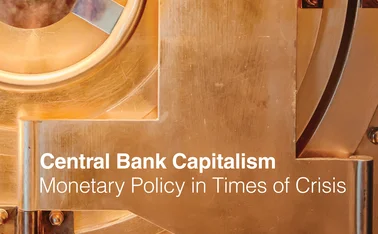Risks facing central banks: action and inaction
Unlike Fed policy in the 1990s, central bank actions this century do not appear overly accommodative, writes Andrew Smithers

The aims of economic policy are broadly agreed, with success defined as brisk growth combined with low and stable levels of unemployment and inflation.
As explained in my article, Escaping the structural liquidity trap (Central Banking journal, Vol 34, Issue 3), we live in a multi-equilibria economy – so that successful management of the economy cannot be assured simply by keeping demand properly balanced with available supply. We also need to avoid excessive levels of money supply and asset
Only users who have a paid subscription or are part of a corporate subscription are able to print or copy content.
To access these options, along with all other subscription benefits, please contact info@centralbanking.com or view our subscription options here: http://subscriptions.centralbanking.com/subscribe
You are currently unable to print this content. Please contact info@centralbanking.com to find out more.
You are currently unable to copy this content. Please contact info@centralbanking.com to find out more.
Copyright Infopro Digital Limited. All rights reserved.
As outlined in our terms and conditions, https://www.infopro-digital.com/terms-and-conditions/subscriptions/ (point 2.4), printing is limited to a single copy.
If you would like to purchase additional rights please email info@centralbanking.com
Copyright Infopro Digital Limited. All rights reserved.
You may share this content using our article tools. As outlined in our terms and conditions, https://www.infopro-digital.com/terms-and-conditions/subscriptions/ (clause 2.4), an Authorised User may only make one copy of the materials for their own personal use. You must also comply with the restrictions in clause 2.5.
If you would like to purchase additional rights please email info@centralbanking.com







